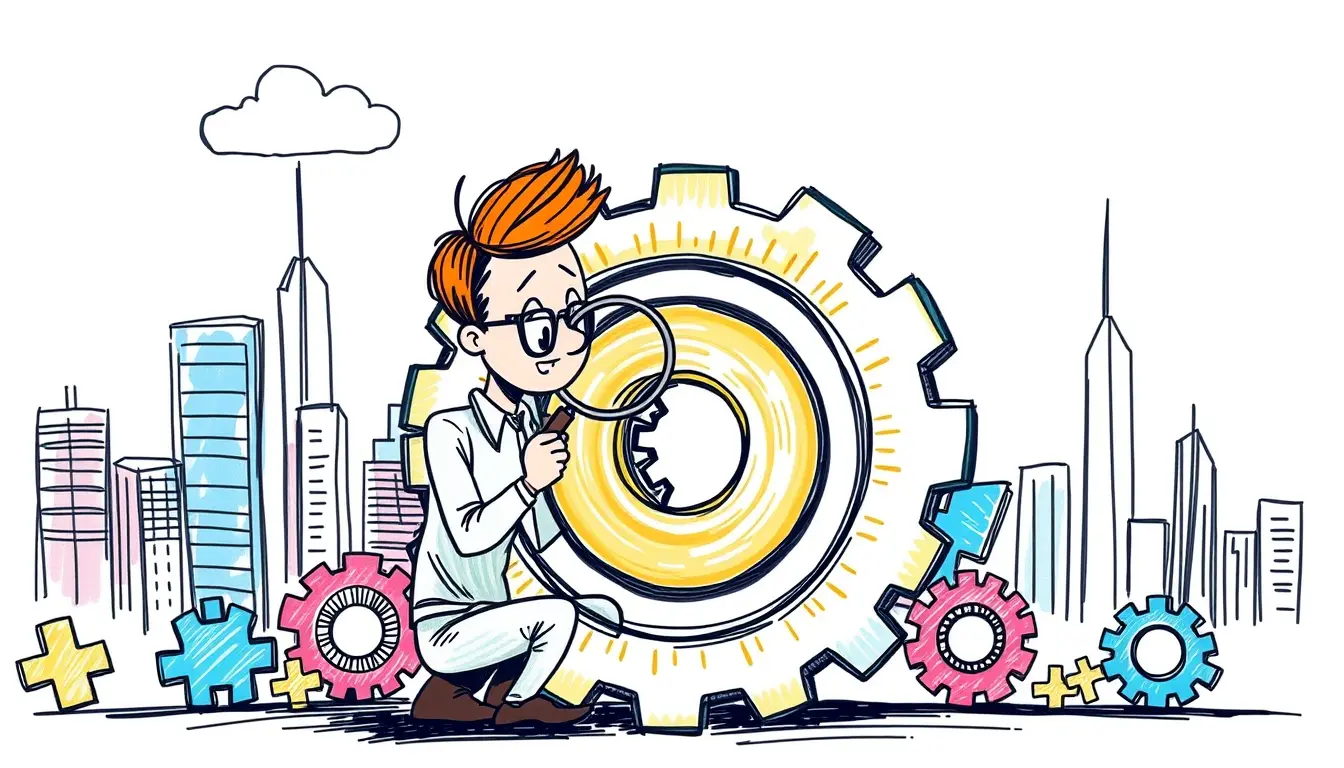Understanding the Burke Litwin Model: A Framework for Assessing Organizational Drivers and Levers
The Burke-Litwin Model is a well-established framework that serves as a valuable tool for assessing organizational drivers and levers. This model provides a comprehensive approach to understanding the complex dynamics that shape organizational performance. By examining a range of factors, such as leadership, culture, external environment, and systems/processes, the model helps organizations determine the key elements that influence their effectiveness and identify areas for improvement.
One of the key strengths of the Burke-Litwin Model lies in its recognition of the interdependencies among various organizational factors. It acknowledges that these factors do not exist in isolation but instead interact and influence each other. For example, leadership behaviors can shape organizational culture, which in turn affects employee behavior and ultimately impacts performance. By taking a holistic view of these interrelationships, the model offers a more comprehensive understanding of the drivers and levers that organizations can leverage to drive sustainable change.
The Importance of Assessing Organizational Drivers: Identifying the Key Factors that Influence Organizational Performance
When it comes to understanding organizational performance, assessing the drivers behind it is of utmost importance. These drivers are the key factors that shape the overall functioning and effectiveness of an organization. By identifying and analyzing these drivers, businesses can gain valuable insights into how to improve their performance and drive success.
One of the primary reasons why assessing organizational drivers is crucial is that it helps businesses identify the areas that have the most significant impact on their performance. By pinpointing these key factors, organizations can focus their resources and efforts on improving specific aspects of their operations. This targeted approach ensures that limited resources are allocated effectively, leading to streamlined processes and enhanced performance. Furthermore, by understanding the key drivers, organizations can prioritize their strategies and initiatives accordingly, ensuring that they are aligned with the factors most critical to their success. Ultimately, assessing organizational drivers provides organizations with the necessary foundation to make informed decisions and drive meaningful improvements in performance.
Uncovering the Levers for Change: Analyzing the Factors that Enable or Inhibit Organizational Transformation
Organizational transformation is a complex process that requires understanding the factors that enable or inhibit change within an organization. By uncovering the levers for change, organizations can identify the key drivers that will facilitate a successful transformation. These levers, or factors, can include elements such as leadership, culture, structure, systems, and individual and group behaviors.
Analyzing these factors is essential to gaining a comprehensive understanding of an organization’s ability to undergo transformation. For instance, leadership plays a crucial role in shaping the organization’s vision, setting strategic goals, and driving change initiatives. Different leadership styles and behaviors can either enable or hinder the transformation process. Similarly, organizational culture heavily influences how employees perceive and respond to change, making it vital to assess values, norms, and beliefs within the organization.
Moreover, evaluating the impact of organizational structure and design on transformation is crucial. The architecture of an organization can either facilitate or impede change efforts, making it necessary to analyze factors such as departmental relationships, communication channels, and decision-making processes. Additionally, assessing the efficiency and effectiveness of organizational systems and processes is essential, as inefficient or outdated systems can hinder the ability to adapt and transform.
Furthermore, individual and group behaviors should be considered when analyzing the levers for change. Employee behaviors, attitudes, and resistance to change can significantly impact the success of transformation efforts. Understanding how day-to-day behaviors align with the desired change can help identify areas for improvement and develop strategies to overcome resistance.
By carefully analyzing and understanding these factors, organizations can uncover the levers for change and develop effective strategies to enable successful transformation. This analysis provides a foundation for making informed decisions, tailoring change initiatives to address specific challenges, and ultimately driving meaningful and sustainable change throughout the organization.
The Role of Leadership as an Organizational Driver: Examining the Impact of Leadership Styles and Behaviors
Leadership plays a crucial role in driving organizational success. The style and behavior of leaders can have a significant impact on the overall performance of an organization. Effective leaders not only set clear goals and provide guidance but also inspire and motivate their teams to achieve higher levels of productivity and innovation. On the other hand, poor leadership can create a negative work environment, demotivate employees, and hinder organizational growth. Therefore, understanding the impact of leadership styles and behaviors is essential for organizations to optimize their performance and achieve their strategic objectives.
One common leadership style that has been widely studied is transformational leadership. Transformational leaders are characterized by their ability to inspire and motivate their followers to go above and beyond their normal duties. They have the vision to create positive change and encourage their teams to embrace new ideas and approaches. Research has shown that transformational leadership is positively associated with employee satisfaction, commitment, and performance. By fostering a supportive and empowering work environment, transformational leaders can enhance employee engagement and promote a culture of innovation and continuous improvement. Conversely, transactional leadership, which is based on a more transactional and task-oriented approach, may result in a lack of employee motivation and limited creativity.
Assessing Organizational Culture: How Values, Norms, and Beliefs Shape Organizational Performance
The culture of an organization plays a vital role in shaping its performance. Values, norms, and beliefs form the foundation of an organization’s culture, and they influence how individuals within the organization behave and make decisions. Organizational values represent the principles and ethics that guide the actions of employees, while norms are the unwritten rules and expectations for behavior that develop over time. Beliefs, on the other hand, are the shared convictions and assumptions held by employees about what is true and important.
When assessing organizational culture, it is important to understand how these cultural elements impact performance. A strong alignment between an organization’s values and its employees’ behaviors can foster a positive work environment and enhance performance. Conversely, a disconnect between the stated values and actual behaviors can lead to conflicts, decreased morale, and decreased productivity. Thus, a thorough assessment of organizational culture can provide valuable insights into areas where improvements can be made to ensure that values, norms, and beliefs align with the desired performance outcomes.
The Influence of External Environment: Understanding the External Factors that Impact Organizational Drivers and Levers
The external environment plays a crucial role in shaping the drivers and levers within an organization. Organizational success is influenced by a variety of external factors that can have both positive and negative impacts. These factors include the economic climate, technological advancements, political and legal changes, market competition, and social trends.
For example, in an economic downturn, organizations may face challenges such as reduced consumer spending, tightening budgets, and increased competition. These external factors can directly affect the organization’s drivers, such as financial resources and customer demand, and may require leaders to make strategic decisions to adapt and survive in the new economic landscape. On the other hand, technological advancements can provide opportunities for organizations to improve efficiency, develop innovative products or services, and gain a competitive edge in the market.
Overall, understanding and monitoring the external environment is essential for organizations to effectively manage their drivers and levers, and adapt to the ever-changing business landscape. By staying informed and responsive to external factors, organizations can proactively identify opportunities and mitigate risks, ultimately driving their long-term success.
• The economic climate can greatly impact an organization’s drivers and levers. Economic downturns may lead to reduced consumer spending, tightening budgets, and increased competition.
• Technological advancements provide opportunities for organizations to improve efficiency, develop innovative products or services, and gain a competitive edge in the market.
• Political and legal changes can significantly affect organizational drivers and levers. Changes in regulations or government policies may require organizations to adapt their strategies or operations.
• Market competition is another external factor that impacts organizational success. Increased competition can drive organizations to innovate and differentiate themselves from competitors.
• Social trends also play a role in shaping organizational drivers and levers. Organizations need to stay informed about changing social attitudes, values, and preferences of their target audience to effectively meet customer demands.
Understanding these external factors allows organizations to make strategic decisions that align with the current business landscape. By monitoring the external environment regularly, leaders can identify potential risks or opportunities that may arise. This proactive approach enables organizations to adjust their strategies accordingly, ensuring long-term success.
In conclusion, the influence of the external environment on organizational drivers and levers cannot be underestimated. It is crucial for organizations to stay informed about economic conditions, technological advancements, political changes, market competition,and social trends in order to effectively manage their resources,demands,and overall strategy.By doing so they will be ableto adaptand thriveinthe ever-changingbusinesslandscape
Evaluating Organizational Structure and Design: Determining the Impact of Organizational Architecture on Performance
Organizational structure and design play a crucial role in determining the overall performance of an organization. The way in which an organization is structured and designed can impact its efficiency, effectiveness, and ability to adapt to change. It provides the framework within which various departments and teams operate, defining the lines of authority, communication, and decision-making.
The structure of an organization refers to the arrangement of roles, responsibilities, and relationships within the organizational hierarchy. It defines how tasks and responsibilities are divided, coordinated, and controlled. A well-designed organizational structure ensures clarity and transparency, enabling employees to understand their roles and responsibilities, and promoting effective communication and collaboration. On the other hand, a poorly designed structure can lead to confusion, duplication of efforts, and a lack of accountability, hampering the organization’s performance.
The Role of Systems and Processes: Assessing the Efficiency and Effectiveness of Organizational Systems
Systems and processes form the backbone of any organization, playing a crucial role in determining its efficiency and effectiveness. Assessing these systems and processes is essential for identifying areas of improvement and making necessary changes to enhance organizational performance. By evaluating the efficiency and effectiveness of various systems within the organization, such as communication systems, decision-making processes, and operational procedures, leaders can gain insights into the overall functioning of the organization and identify any bottlenecks or inefficiencies that may be hindering progress.
One key aspect of assessing organizational systems and processes is evaluating their alignment with the overall goals and objectives of the organization. When systems and processes are in sync with the strategic direction of the organization, they enable smooth workflow and enhance productivity. Conversely, any misalignment can lead to wasted time, duplication of efforts, and decreased performance. By analyzing the efficiency and effectiveness of organizational systems, leaders can identify areas where realignment is required and make informed decisions to streamline operations and improve outcomes. It is through this assessment that organizations can ensure that their systems and processes are optimized to support their mission and drive success.
Analyzing Individual and Group Behavior: Understanding how Employee Behaviors Impact Organizational Drivers and Levers
Individual and group behavior play a critical role in shaping the overall performance of an organization. Employee behaviors can either enhance or hinder the effectiveness of organizational drivers and levers.
When employees demonstrate positive behaviors such as motivation, collaboration, and adaptability, they contribute to the success of the organization. On the other hand, negative behaviors like resistance to change, lack of cooperation, or poor teamwork can impede progress and hinder the achievement of organizational goals.
Understanding how employee behaviors impact organizational drivers and levers is essential for leaders and managers. By recognizing the impact of individual and group behavior, organizations can develop strategies to foster a positive work environment, encourage employee engagement, and address any behavioral challenges that may arise. Ultimately, the synergy between employee behavior and organizational drivers is a key factor in determining the success and performance of the organization as a whole.
Applying the Burke Litwin Model: Practical Steps for Conducting an Organizational Assessment using the Burke Litwin Model.
The Burke Litwin Model provides a comprehensive framework for conducting an organizational assessment, allowing organizations to identify and analyze their key drivers and levers. To apply this model effectively, organizations should follow a series of practical steps. These steps include defining the purpose and scope of the assessment, gathering relevant data and information, conducting interviews and surveys with employees at all levels, analyzing the collected data, and identifying areas of strength and weakness. It is crucial to involve all stakeholders in the assessment process to ensure a comprehensive and accurate understanding of the organization’s dynamics. By following these practical steps, organizations can gain valuable insights into their key factors influencing performance and identify opportunities for improvement and growth.
When applying the Burke Litwin Model, it is essential to keep in mind that the assessment should go beyond surface-level observations. It is crucial to dig deeper and analyze the underlying causes and relationships between the different drivers and levers. This involves examining the organizational culture, leadership styles and behaviors, external environment, systems and processes, as well as individual and group behavior. By thoroughly evaluating these components, organizations can gain a holistic understanding of their current state and identify potential areas for intervention. The Burke Litwin Model provides a systematic approach for conducting an organizational assessment, enabling organizations to make informed decisions about how to optimize their performance and achieve their strategic goals.
What is the Burke Litwin Model?
The Burke Litwin Model is a framework used for assessing and understanding the various factors that influence organizational performance. It helps identify key drivers and levers for change within an organization.
Why is it important to assess organizational drivers?
Assessing organizational drivers is important because it helps identify the key factors that influence organizational performance. By understanding these drivers, organizations can focus on improving areas that have the greatest impact on their overall success.
What are the levers for change in the Burke Litwin Model?
The levers for change in the Burke Litwin Model are the factors that enable or inhibit organizational transformation. These factors can include leadership styles, organizational culture, external environment, organizational structure and design, systems and processes, and individual and group behavior.
How does leadership impact organizational drivers?
Leadership plays a crucial role as an organizational driver. Different leadership styles and behaviors can have a significant impact on an organization’s performance, employee morale, and overall success.
How does organizational culture shape organizational performance?
Organizational culture, which includes values, norms, and beliefs, plays a significant role in shaping organizational performance. It influences employee behavior, decision-making, and overall organizational effectiveness.
What external factors impact organizational drivers and levers?
The external environment, such as economic conditions, industry trends, and competitive forces, can have a significant impact on organizational drivers and levers. It is important to assess and understand these external factors to effectively manage change and drive organizational success.
How does organizational structure and design impact performance?
Organizational structure and design can have a profound impact on performance. The way an organization is structured and designed can influence communication, decision-making, and overall efficiency and effectiveness.
How can the efficiency and effectiveness of organizational systems be assessed?
The efficiency and effectiveness of organizational systems can be assessed by evaluating their alignment with organizational goals, their ability to support desired outcomes, and their overall efficiency in delivering results.
How does employee behavior impact organizational drivers and levers?
Employee behavior, both at an individual and group level, can have a significant impact on organizational drivers and levers. Positive employee behaviors can contribute to a healthy organizational culture and drive performance, while negative behaviors can hinder progress and success.
What are the practical steps for conducting an organizational assessment using the Burke Litwin Model?
The practical steps for conducting an organizational assessment using the Burke Litwin Model include identifying the key drivers and levers, collecting data and information related to each driver and lever, analyzing the data to identify strengths and areas for improvement, developing action plans to address the identified areas, and monitoring progress and making necessary adjustments.














Leave a Reply